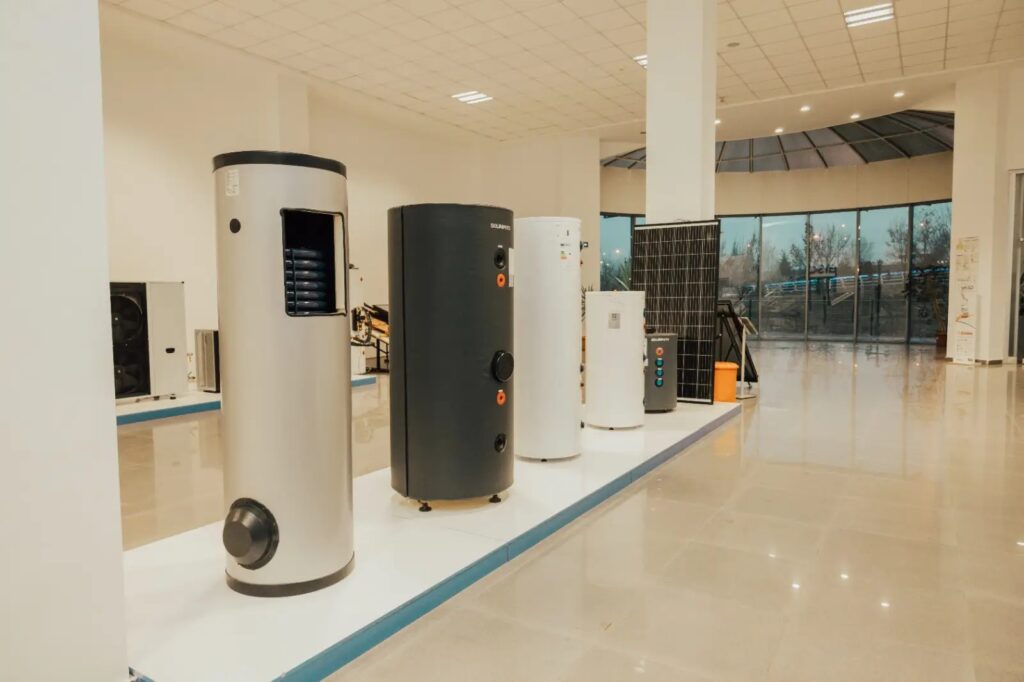
In the ever-evolving realm of thermal energy management, the buffer tank emerges as a crucial component, ensuring efficient and reliable operation. But what exactly is a buffer tank, and how does it function within thermal energy storage systems? This article delves into the world of buffer tanks, exploring their purpose, operation, and the benefits they offer.
Understanding the Buffer Tank: A Reservoir for Thermal Energy
A buffer tank, also known as a thermal buffer or hydraulic separator, is essentially a pressurized insulated storage vessel used in thermal systems. It serves as a temporary reservoir for a heated or cooled fluid, acting as a buffer between the heat source and the demand side. This intermediary role plays a vital role in optimizing system efficiency, stability, and performance.
The Symphony of Operation: How Does a Buffer Tank Work?
The precise workings of a buffer tank vary depending on the specific application. However, the core principle remains consistent:
Heat Source: The system’s primary heat source, such as a boiler, solar thermal collectors, or a district heating network, heats the fluid (typically water or glycol) to a desired temperature.
Charging: The heated fluid is then pumped into the buffer tank. This process is known as “charging” the tank. Internal stratification, a natural phenomenon where warmer water rises and cooler water settles, often occurs within the tank.
Buffering: The stored hot or cold fluid acts as a buffer, providing a readily available reserve to meet fluctuating demands in the system. This buffering effect helps to:
Reduce cycling: By maintaining a thermal reservoir, the buffer tank prevents the heat source from constantly turning on and off in response to minor demand changes. This reduces wear and tear on the equipment, leading to increased lifespan and energy savings.
Improve system stability: The buffer tank helps to smooth out temperature fluctuations, ensuring a consistent and reliable supply of hot or cold water to the building or process.
Accommodate peak loads: During periods of high demand, the buffer tank can supplement the primary heat source by releasing stored thermal energy. This prevents system overload and ensures adequate capacity to meet peak needs.
Discharging: When hot water is required for heating purposes or cold water is needed for cooling applications, the fluid is pumped out of the tank, referred to as “discharging.” This process utilizes the stored thermal energy to meet the demand.
Recharging: As the stored energy depletes, the buffer tank is replenished by the heat source, completing the cycle.
The Connection: Buffer Tanks and Thermal Energy Storage
Buffer tanks are often integrated into thermal energy storage (TES) systems. TES refers to the technology of storing thermal energy for later use. Buffer tanks, due to their ability to store and release thermal energy, serve as a crucial component of many TES systems. They offer a shorter-term storage solution compared to other TES technologies like boreholes or chilled water tanks, but their compact size and relatively lower cost make them a popular choice for diverse applications.
Benefits of Utilizing Buffer Tanks
Integrating a buffer tank into your thermal system offers several advantages:
Improved System Efficiency: By reducing equipment cycling and maintaining a stable operating temperature, buffer tanks contribute to overall system efficiency and energy savings.
Enhanced System Reliability: The buffering effect ensures a consistent supply of hot or cold water, mitigating the impact of fluctuating demand and fostering system reliability.
Reduced Equipment Wear and Tear: By minimizing the number of on-off cycles for the heat source, buffer tanks extend the lifespan of equipment and reduce maintenance costs.
Increased System Flexibility: The ability to store and release thermal energy provides operational flexibility, allowing for integration with renewable energy sources like solar thermal or district heating networks.
Peak Load Management: Buffer tanks can act as a buffer during peak demand periods, preventing system overload and ensuring sufficient capacity to meet temporary spikes in demand.
Considerations When Choosing a Thermal Energy Storage System with a Buffer Tank
While buffer tanks offer significant benefits, some key factors must be considered when incorporating them into a thermal energy storage system:
System Requirements: The size and capacity of the buffer tank should be carefully chosen based on the specific heating or cooling demands of the building or process.
Space Availability: Installing a buffer tank requires dedicated space, and its size should be factored into the overall system design and feasibility.
Initial Investment: Buffer tanks require an initial investment, and a cost-benefit analysis should be conducted to evaluate the potential return on investment considering energy savings and equipment lifespan extension.
Maintenance Needs: Like any equipment, buffer tanks require periodic maintenance to ensure their optimal performance and lifespan.
Conclusion: A Balanced Approach to Thermal Efficiency
By incorporating a buffer tank into your thermal system, you unlock the potential for improved efficiency, enhanced reliability, and increased flexibility. Their ability to act as a thermal reservoir reduces wear and tear on equipment, contributing to cost savings and a more sustainable operation. Whether employed in residential heating systems, commercial buildings, or industrial processes, buffer tanks offer a valuable solution for maintaining thermal equilibrium and optimizing energy usage. So, as you navigate the ever-evolving landscape of thermal management, consider the benefits that a buffer tank can bring to your system, ensuring a balanced and efficient approach to your thermal energy needs.







